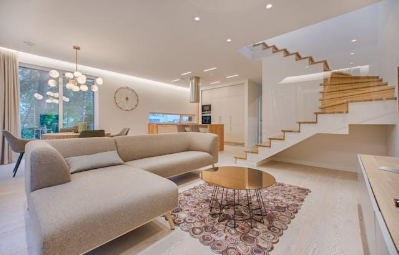5 Tips for Making a Home More Accessible for ALS Patients

Strong 8k brings an ultra-HD IPTV experience to your living room and your pocket.
Caring for someone with ALS can feel like you are constantly trying to stay one step ahead of their needs. As the disease progresses, simple tasks like opening a door and using the bathroom can become quite difficult. If you're living with ALS or supporting someone who is your home may need changes to make everyday life easier and safer.
Making your home more accessible isn’t just about comfort, it’s also about helping your loved one maintain some independence. With the right adjustments, you can create a space that works better for everyone. These five tips will help you think through your options and make thoughtful changes.
1. Start with ALS Accessibility For iPhone to Control the Environment
Before jumping into major renovations, take a look at some of the tech tools already at your fingertips. One of the best ways to help someone with ALS control their surroundings is by using smart devices, especially those connected to an iPhone. ALS Accessibility For iPhone is a built-in feature that lets users operate their phones using their voice, head movements, or even eye tracking.
This can be a big help around the house. With smart home devices connected to the phone, like lights, thermostats, and locks—the person with ALS can stay more in control without always needing physical help.
2. Widen Doorways to Make Room for Mobility Devices
Many homes are not built with wheelchairs or walkers in mind. As ALS advances, walking may become difficult, and mobility aids become necessary. Narrow doorways can make it hard to move from room to room. If you’re planning updates, consider widening the most-used doorways to at least 36 inches.
You don’t have to fix every doorway at once. Start with the ones that lead to the bedroom, bathroom, and main living space. This gives the person living with ALS better access to the areas they use most.
3. Install Ramps to Replace Stairs
Even a small step at the front door can become a big barrier. One of the first upgrades you may need is a ramp. Ramps allow for easier entry and exit, especially if someone is using a wheelchair, scooter, or walker. You can buy ready-made ramps or have one custom-built based on the layout of your home.
If there are steps inside the home, like into the sunken living room or laundry area—a ramp can help there, too. Look for ramps with non-slip surfaces to prevent falls and improve safety for everyone.
4. Make the Bathroom Easier to Use
Bathrooms can be one of the most dangerous rooms in the house for someone with ALS. Wet floors, tight spaces, and high bathtubs create risks. Simple changes, like adding grab bars near the toilet and in the shower, can offer more support. A walk-in shower with a bench is also a helpful option.
Making the bathroom more accessible gives the person with ALS more privacy and reduces the risk of injury during daily routines.
5. Adjust Furniture and Layout for Better Movement
As mobility changes, so should your home’s layout. It might be time to rearrange furniture to create wide, clear paths in each room. Move rugs that can cause tripping, shift chairs that block easy access, and keep essential items within arm’s reach.
You don’t have to buy any new furniture. Sometimes, just lowering a table or choosing a lightweight chair can make a space feel more open and comfortable.
Note: IndiBlogHub features both user-submitted and editorial content. We do not verify third-party contributions. Read our Disclaimer and Privacy Policyfor details.







